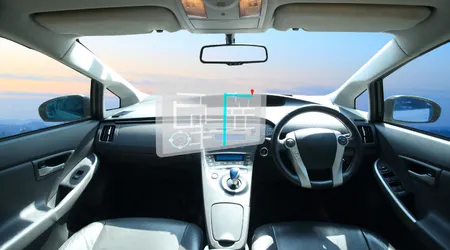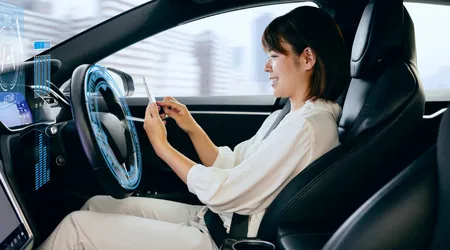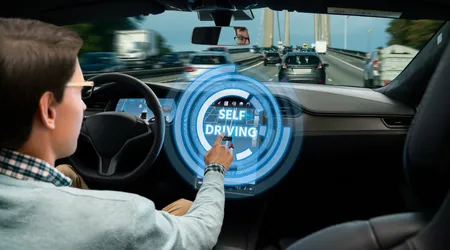Best Practices for Maintaining Autonomous Driving Systems
Anúncios
Practices for Maintaining Autonomous Driving Systems!
Autonomous driving systems represent a leap toward a future where transportation is safer, more efficient, and less reliant on human intervention.
However, the complexity of these systems integrating sensors, artificial intelligence, and intricate software demands rigorous maintenance to ensure optimal performance.
Anúncios
Best Practices for Maintaining Autonomous Driving Systems involve a strategic blend of proactive monitoring, regular updates, and meticulous hardware care.
Practices for Maintaining Autonomous Driving Systems

This article explores these practices, offering actionable insights, real-world examples, and data-driven arguments to guide manufacturers, fleet operators, and enthusiasts in keeping these systems at peak performance.
++ How to Clean Your EV’s Battery Terminal Safely
Maintaining autonomous vehicles (AVs) is not just about fixing what’s broken; it’s about anticipating challenges before they arise.
Unlike traditional vehicles, AVs rely on a symphony of components lidar, radar, cameras, and onboard computers that must work in harmony.
Neglecting even one element can cascade into system-wide failures, compromising safety and efficiency.
By adopting best practices, stakeholders can extend the lifespan of these systems, reduce downtime, and ensure compliance with evolving regulatory standards.
Why should you care about these practices?
The stakes are high autonomous vehicles are projected to account for 20% of global vehicle sales by 2030, according to a McKinsey report.
++ The Truth About Wireless Tire Pressure Sensors (TPMS 2.0)
Proper maintenance isn’t just a technical necessity; it’s a competitive advantage in a rapidly growing industry.
Let’s dive into the key areas of focus to keep autonomous driving systems running smoothly.
1. Proactive Software Updates and Calibration
Software is the backbone of autonomous driving systems, processing data from sensors to make real-time decisions.
Regular updates are critical to address bugs, enhance algorithms, and adapt to new road conditions or regulations.
Unlike consumer apps, where updates might add cosmetic features, AV software updates often improve safety-critical functions, such as object detection or path planning.
Consequently, a disciplined update schedule is non-negotiable.
Moreover, calibration ensures that software interprets sensor data accurately.
++ Motorcycle Battery Maintenance in the Era of Smart Chargers
For instance, a misaligned lidar sensor could misjudge distances, leading to dangerous navigation errors.
Calibration involves testing sensors against known benchmarks and adjusting algorithms accordingly.
Fleet operators, for example, should implement monthly calibration checks, using diagnostic tools to verify sensor alignment.
This practice minimizes errors and boosts system reliability, especially in diverse environments like urban centers or rural roads.
Consider the case of a ride-sharing company operating a fleet of 50 autonomous vehicles in San Francisco.
In 2024, they noticed a 15% increase in false-positive pedestrian detections after a software update.
By recalibrating their lidar and camera systems and rolling back a faulty algorithm patch, they restored system accuracy within 48 hours.
This example underscores the need for rigorous testing post-update to catch issues early, ensuring seamless operation.
| Software Maintenance Task | Frequency | Purpose |
|---|---|---|
| Software Updates | Bi-weekly | Fix bugs, enhance AI models |
| Sensor Calibration | Monthly | Ensure accurate data input |
| Algorithm Validation | Post-update | Verify decision-making logic |
2. Hardware Inspection and Preventive Maintenance

While software drives decision-making, hardware sensors, cameras, and computing units captures the real-world data that fuels those decisions.
Regular hardware inspections are vital to detect wear, environmental damage, or manufacturing defects.
For instance, lidar sensors exposed to dust or rain can accumulate debris, reducing their range and accuracy.
Therefore, cleaning schedules and protective coatings are essential to maintain sensor performance.
Preventive maintenance goes beyond cleaning; it involves replacing components before they fail.
Batteries in onboard computers, for example, degrade over time, risking sudden shutdowns.
By monitoring battery health metrics and replacing units proactively, operators can avoid costly downtime.
A 2023 study by the Society of Automotive Engineers found that preventive maintenance reduced AV system failures by 30%, highlighting its impact on reliability.
Imagine a logistics company deploying autonomous trucks across the Midwest.
During a routine inspection, they discovered micro-cracks in a radar sensor caused by thermal expansion in extreme weather.
By replacing the sensor before it failed, they avoided a potential collision during a high-speed delivery run.
This proactive approach not only saved costs but also reinforced their reputation for reliability.
Adopting a similar mindset ensures hardware remains a robust foundation for AV systems.
| Hardware Maintenance Task | Frequency | Tools Required |
|---|---|---|
| Sensor Cleaning | Weekly | Microfiber cloths, approved solutions |
| Battery Health Check | Quarterly | Diagnostic software |
| Component Replacement | As per lifecycle | OEM parts, technician training |
3. Data Management and Cybersecurity
Autonomous vehicles generate massive amounts of data—terabytes daily for a single vehicle.
Managing this data effectively is crucial for system performance and regulatory compliance.
Data logs from sensors and cameras must be stored securely, analyzed for anomalies, and used to train machine learning models.
However, poor data management can lead to inefficiencies, such as delayed updates or missed insights into system performance.
Cybersecurity is equally critical.
AVs are vulnerable to hacking attempts that could manipulate navigation or steal sensitive data.
Implementing end-to-end encryption and regular penetration testing mitigates these risks.
For example, a 2024 incident involving a hacked AV in Europe exposed weaknesses in unencrypted data streams, prompting manufacturers to adopt stronger protocols.
Robust cybersecurity measures protect not only the vehicle but also public trust in autonomous technology.
Think of an AV’s data system as a human brain: just as neurons must communicate clearly to process thoughts, data pipelines must be clean and secure to support decision-making.
Neglecting either risks a breakdown in function.
By prioritizing data integrity and security, operators can ensure their systems remain resilient against both technical and malicious threats.
| Data & Security Task | Frequency | Key Considerations |
|---|---|---|
| Data Backup | Daily | Secure cloud storage |
| Penetration Testing | Biannually | Identify vulnerabilities |
| Data Analysis | Weekly | Detect performance trends |
4. Driver and Operator Training

Even in fully autonomous systems, human oversight remains essential, especially for Level 4 vehicles operating in specific domains.
Training operators to monitor and intervene when necessary enhances system reliability.
This includes understanding error codes, interpreting diagnostic reports, and knowing when to escalate issues to technicians.
Well-trained operators can reduce response times to system alerts by up to 40%, according to industry benchmarks.
Training should also cover regulatory compliance.
As governments introduce stricter AV safety standards, operators must stay informed about local laws.
For instance, California’s 2025 regulations require real-time reporting of system anomalies, necessitating trained personnel to manage compliance tasks.
Continuous education ensures operators remain agile in a rapidly evolving field.
A delivery company in Tokyo faced challenges when their AVs misread temporary road signs during construction.
By retraining their operators to manually override navigation in such scenarios, they reduced delivery delays by 25%.
This example highlights how human expertise complements autonomous systems, bridging gaps that technology alone cannot address.
| Training Task | Frequency | Focus Area |
|---|---|---|
| Diagnostic Training | Quarterly | Error code analysis |
| Regulatory Updates | Annually | Compliance with local laws |
| Emergency Protocols | Biannually | Manual override procedures |
5. Environmental Adaptability and Testing
Autonomous driving systems must perform reliably across diverse conditions—rain, snow, fog, or extreme heat.
Regular testing in controlled environments simulates these conditions to identify weaknesses.
For example, cameras may struggle with glare in bright sunlight, requiring software tweaks or hardware upgrades.
By conducting seasonal tests, manufacturers can ensure systems adapt to environmental challenges.
Adaptability also involves updating maps and geofencing data.
AVs rely on high-definition maps to navigate, but road changes new intersections or altered speed limits can render maps obsolete.
Regular map updates, paired with real-world testing, keep systems aligned with reality.
A 2024 report by the International Transport Forum noted that outdated maps caused 12% of AV navigation errors, underscoring the need for vigilance.
Testing isn’t just about fixing problems; it’s about anticipating them.
Like a seasoned explorer preparing for uncharted terrain, AV operators must simulate worst-case scenarios to build resilience.
This proactive approach ensures systems remain robust, no matter the conditions they face.
| Testing Task | Frequency | Objective |
|---|---|---|
| Environmental Simulation | Quarterly | Test sensor performance |
| Map Updates | Monthly | Ensure navigation accuracy |
| Stress Testing | Annually | Evaluate system limits |
FAQs: Practices for Maintaining Autonomous Driving Systems
To address common concerns about maintaining autonomous driving systems, the following table answers key questions with concise, actionable insights.
These FAQs reflect real-world challenges and provide clarity for operators and enthusiasts alike.
| Question | Answer |
|---|---|
| How often should sensors be cleaned? | Weekly, using approved solutions to avoid damage. Harsh weather may require more frequent cleaning. |
| What happens if software updates are delayed? | Delays can lead to unaddressed bugs or outdated algorithms, increasing the risk of navigation errors. |
| Are cybersecurity threats a real concern for AVs? | Yes, hacking can compromise navigation or data privacy. Regular penetration testing is essential. |
| How can operators stay compliant with regulations? | Annual training on local laws and real-time reporting tools ensure compliance with evolving standards. |
| Why is environmental testing critical? | Diverse conditions like rain or fog can impair sensors, necessitating regular testing to maintain reliability. |
Practices for Maintaining Autonomous Driving Systems: Conclusion
Maintaining autonomous driving systems is a multifaceted endeavor that demands precision, foresight, and adaptability.
By prioritizing Best Practices for Maintaining Autonomous Driving Systems from software updates to hardware care, data security, operator training, and environmental testing stakeholders can ensure these systems remain safe, efficient, and future-ready.
The 30% reduction in system failures from preventive maintenance, as noted by the Society of Automotive Engineers, highlights the tangible benefits of these practices.
As the industry evolves, so too must maintenance strategies.
By embracing proactive measures, leveraging data, and fostering human expertise, we can unlock the full potential of autonomous vehicles.
After all, isn’t the promise of a safer, smarter transportation future worth the effort?
